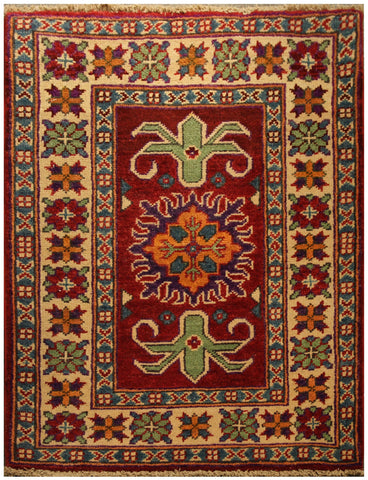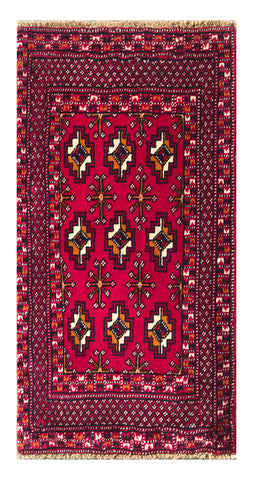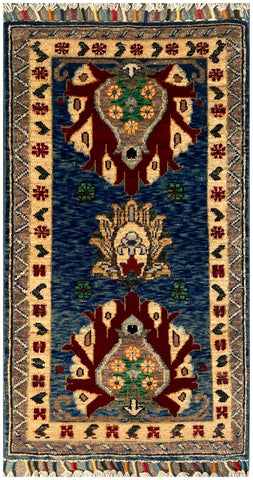24161-Turkmen Hand-Knotted/Handmade Persian Rug/Carpet Traditional/Authentic/ Size: 3'5" x 1'8"
Previous Product Next ProductBabak's Oriental Carpets
Out of stock
extra small
NR: 24161
Location: Turkmen
Size: 3'5" x 1'8"
Country: Iran
Pile: Wool
Base: Cotton
TURKOMAN
Details:
Turkoman rugs are handmade in north-western and eastern Iran, parts of Turkey, Turkmenistan, Azerbaijan, Uzbekistan, Syria, and other...
NR: 24161
Location: Turkmen
Size: 3'5" x 1'8"
Country: Iran
Pile: Wool
Base: Cotton
TURKOMAN
Details:
Turkoman rugs are handmade in north-western and eastern Iran, parts of Turkey, Turkmenistan, Azerbaijan, Uzbekistan, Syria, and other parts of the Caucasus.
The Turkoman art of knotting grew out of the practical necessities of a nomadic way of life. Mobility was an important requirement of this lifestyle and all the nomad’s personal property had to be, as far as possible light, easily transportable and made from readily available raw materials, the most important of which was the wool from their own flocks of sheep. Piled carpets provided protection from the cold underfoot. In these climates, freezing temperatures seep up from the ground at night, and rugs could also be used as covers and blankets.
Description:
Turkomans are generally soft and lush and similar to one another. They are easily distinguishable from other Persian rugs. The patterns are normally all-over, known as guls, repeated in straight lines on the field, with the most popular color being a rich burgundy, exclusive to the Turkomans. These guls vary from one tribe to the other, and also appear in the Bokhara pattern of Kashmir where they are often called the “lucky elephant’s foot” since they resemble the large oval reliefs made by an elephant’s footprint.
Background colors can also be found in navy blue, black or a series of beiges. These are sometimes referred to as Caucasian carpets. Turkoman rugs have small, repeating geometric designs and are normally fine quality. The elephant foot and octagonal gul motifs tend to look best in smaller sizes that make the most of the intricate pattern and have fewer repetitions of the form. Oriental Turkoman rugs are unfortunately not the hardest wearing rugs, and are recommended more for decorative use than high traffic areas. Turkoman rugs usually come in greens, reds, whites, and browns. You’ll hear Turkoman rugs referred to as Beshir rugs, Bokhara rugs, or Samarkand rugs.
The dying methods used are similar to those employed by other global weavers and artisans. The use of vegetables, bark, roots and other natural items to make dyes has been a well known art for many thousands of years.
Madder root, indigo, St. John's wort, onion, saffron, sumac, chamomile, rhubarb, turmeric, sage, poppy, buckthorn, quince, almond, walnut, chestnut and henna are just a few of the long list of natural dye sources, with madder and indigo perhaps the most commonly used. To this already complicated brew yet another ingredient is usually added, namely a fixative/a bonding agent known as "mordant." It is applied to the wool before, often during, and occasionally after dyeing. Known as mordanting, this process has its ancient roots in China and India, reportedly passing to Europe via Persia and Turkey.
Price Range and Value:
LOW TO MEDIUM HIGH TO ANTIQUE (Collectable)
For any further questions please call us at: (250) 480-7114
Turkmen Turkomen Turkemen Articles & VideosWikipedia Entry (Article)
Showcase/Production (Video)
People & Culture (Video)
Landscapes & Nature (Video)
Carpet Museum (Video)
















